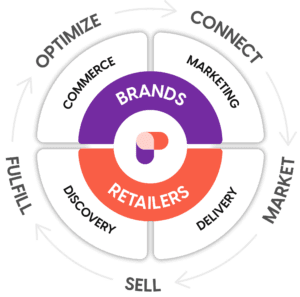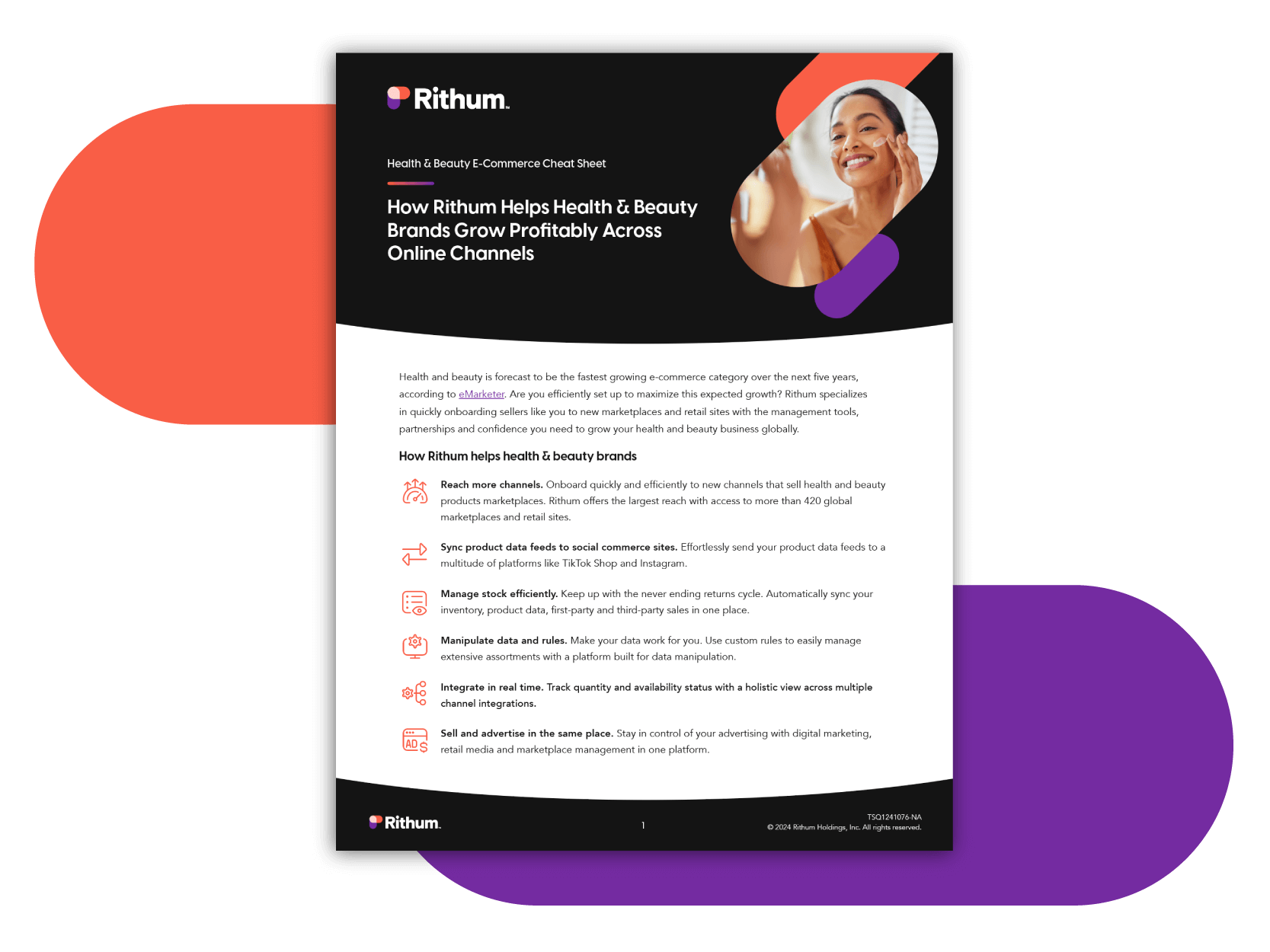Years ago, the question of e-commerce for brands was fairly simple: yes or no?
But since then, e-commerce has evolved to an ever-growing list of online selling destinations, channel strategies, business models and more. As most brands embrace e-commerce, they do so in a variety of ways.
Developing a multichannel strategy can unlock new audiences for your brand and new opportunities for your products. It can also create a better, more seamless experience for your customers. And it can make your business more diversified and resilient to industry disruption.
However, if not done carefully, a sprawling, unfocused multichannel approach can also overextend your brand, dilute the effectiveness of your channel strategies and become a drain on your resources.
The journey to a healthy, scalable multichannel brand presence involves some difficult decisions and complex strategies. While it may seem a little daunting at first, multichannel success is all about the framework you use to create it.
The Multichannel Growth Flywheel for Brands


As you examine your approach to e-commerce, a growth flywheel can be an effective, high-level way to think about your approach to the multichannel e-commerce landscape. Working through the flywheel can bring up important questions, such as:
What are the brand’s strengths? Where are its weaknesses? What opportunities should be considered? Is the brand investing enough in this part of the flywheel? Do we have all the pieces in place to grow and scale sustainably?
When it comes to multichannel commerce, five essential components make up a holistic growth strategy:
- Connect your products to new channels of demand
- Market your products effectively to drive awareness and sales
- Sell your products where and how consumers prefer to shop
- Fulfill your customer’s expectations with fast, efficient delivery
- Optimize your channel strategies to constantly improve results
Challenges and Strategies for Success
There’s obviously a lot to consider and analyze at each stage of the flywheel, but here are some of the most glaring, high-level challenges we see modern brands face in the multichannel landscape — along with ways we’ve seen successful brands mitigate and overcome them.
Connect your products to new channels of demand
Challenges
- Choosing your mix of sales channels — There are hundreds of different marketplaces, retail channels and webstores to choose from around the world. Not all of them are right for your products.
- Defining your channel relationships — Whether you sell first party (1P), third party (3P) or a hybrid model, determining the best business model for your selling channel will play a big part in your success.
- Navigating varying channel requirements — They’re all different, so each selling destination requires a different format for your product data to avoid errors.
- Synchronizing product data — Updating your product information across every channel can be complicated.
Strategies
- Set clear goals — Finding the channels that are profitable and make sense for your products requires asking probing questions about your own business and what you’re looking to achieve (i.e., volume vs. profit, awareness vs. conversions). These questions can help you figure out your goals, and the answers will help inform where you can and want to go.
- Centralize your product data — Having a single hub for your product data allows you to synchronize your product information across your entire selling network, maintain consistency for your brand and automate changes. But be sure to leverage software that’s robust enough to transform your product data reliably while you scale.
- Stay flexible — The challenges of business relationships vary from channel to channel, but successful brands try to take an agile, adaptable approach to marketplaces. It will help cultivate a better working relationship with your channels and allow you to set specific strategies around things like product assortment, pricing and fulfillment.
Market effectively to drive awareness and sales
Challenges
- Building full-funnel campaigns — Your campaigns should be structured to find and engage your potential customers across their entire buying journey.
- Creating visibility for your products — As the competitive landscape grows more intense, your products need to stand out or they’ll get lost in the crowd.
- Navigating a fast-changing digital marketing landscape — Keeping up with innovation is a full-time job. But not every shiny, new feature is right for your brand.
- Allocating your ad budget effectively — More channels are building robust advertising programs. It’s your job to figure out which ones deserve your budget.
- Facilitating seamless buyer journeys — Your customers should have a clear path to purchase at each digital touchpoint.
Strategies
Develop advanced retail media campaigns — Increase your visibility on marketplaces and retail sites with a campaign structure that allows you to balance investment and profitability, including proper segmentation, bidding optimization and continuous testing.
Integrate search and social media strategies — Don’t forget search and social campaigns. These channels are still a vital part of your marketing mix and should be directly aligned with your other ad efforts.
Automate your ad management — Improve the efficiency and effectiveness of your campaigns as you scale to new channels.
Make more moments shoppable — Build dynamic and shoppable digital marketing campaigns to make the customer’s journey to purchase as smooth as possible. The quicker the journey, the more likely the user will convert.
Sell your products where and how consumers prefer to shop
Challenges
- Optimizing product information across your entire selling ecosystem — Consumers need the most up-to-date information they can get at any given time to make a decision about your products.
- Allocating cross-channel inventory — Whether you’re selling your entire catalog direct to consumers or allocating some products exclusively to your retailers, it’s important that consumers never see an “out of stock” notice.
- Establishing a pricing strategy — Dynamic pricing is essential to win the top spot on marketplaces but a race to the bottom on price could eliminate your profit.
- Avoiding conversion dead ends — Interested consumers should always have a clear option for taking the next step in their buying journey.
- Receiving orders from different sources — Decentralized order management is the first step in a disorganized and disconnected fulfillment process.
Strategies
- Consolidate inventory and order management — Converting consumers at the moment it matters requires giving them the best purchase experience. In a multichannel business model, that means managing all product content and inventory levels from a single source to keep that data dynamic and accurate.
- Automate repricing — Leveraging robust repricing technology (both algorithmic and rule-based) can help you automate your pricing changes and win the top spots while still maintaining a profit.
- Provide alternative buying options — Shoppable media technology shrinks the buying journey by making any campaign, ad or link instantly shoppable — while providing multiple purchase options for consumers should one retailer go out of stock.
Fulfill your customer’s expectations with fast, efficient delivery
Challenges
- Meeting increased consumer expectations — Consumers have been conditioned to expect and demand faster delivery times, and the industry-standard continues to shift.
- Determining the right fulfillment model and logistics partners — Whether it’s Fulfillment by Amazon (FBA), Seller Fulfilled Prime or various third-party logistics providers (3PLs), finding the right options will have a big impact on your future customers’ experiences with your brand.
- Processing orders immediately — The fulfillment process can’t begin until orders are routed quickly and accurately to the right warehouse.
Strategies
- Communicate with transparency — Leverage whatever technology or efficiencies you can to be transparent and proactive with your customers, even if you’re late with an order or dealing with a return. Their experience with your brand matters, and your effort is often the difference between a one-time buyer and a lifelong customer.
- Centralize your operations for agility — Your fulfillment model will be determined by your business objectives and scalability versus profitability. Increase your agility in responding to evolving consumer demands and by solving any potential issues through centralization of all your e-commerce operations.
- Automate order routing — Communication between your selling channel, your shipping provider and your warehouses should be seamless and automatic.
Optimize your channel strategies to constantly improve results
Challenges
- Surfacing actionable data — Reliable performance metrics from each channel allow you to steer your strategy in the right direction.
- Analyzing cross-channel interactions — With several channels selling your products, brands need to understand their respective positioning and possible interference. Are these channels complementing each other or competing with one another?
- Influencing the performance of your products on retail channels — Retailers manage product pages, prices, orders and more, making it harder for brands to optimize.
- Assessing your channel relationships — Most brands don’t have a clear process to determine when a channel isn’t working and might need to be dropped.
- Minimizing strains on internal resources — Without the right automation and processes in place, the amount of work to keep a channel going can rapidly outweigh the business benefits.
Strategies
- Work with consistent success metrics — Different channels come with different business models, making it difficult to compare apples to apples. Consolidate your success metrics into comparable indicators to properly gauge the performance of each channel.
- Mitigate cross-channel competition — Look at your array of channels from the customer’s perspective and determine the role each channel plays. Strive to achieve consistency (content, prices) and a complementary assortment (product selection) between channels.
- Drive retailer relationships with data — Retailer discussions centered on sellout can be sterile. Make sure to bring up performance drivers like in-stock rates, content quality and promotional activity.
Drive Profitable Growth with Rithum
With a centralized platform connected to the world’s leading end-to-end e-commerce network, Rithum provides a comprehensive, multichannel solution through a single e-commerce partner.
We can help you streamline your e-commerce operations, scale your business and optimize your strategies on each channel or any phase of your multichannel journey.
Curious about how it works? Let us show you.


